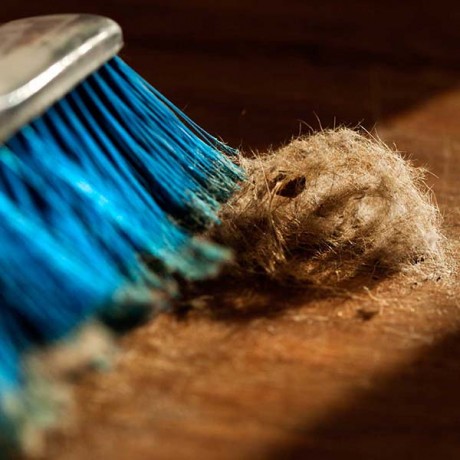Battling dust
How to find where all that dust comes from and what to do about it
By Hannah McKenzieQ:My house is extremely dusty despite frequent cleaning. Is there something about my house that makes it dustier than other homes? What can I do to make this better?
A:My parents would point to furry indoor pets as the culprits. I disagree. You can keep your furry friends and still drastically improve the dust problem.
Assuming that no one smokes inside your home and your weekly cleaning regime already includes vacuuming, mopping, dusting with a damp rag, and washing your and your pet’s bedding, your vacuum cleaner or house may be the problem.
Vacuum cleaners
Vacuum cleaners do a great job sucking up marbles, socks and dog fur but many of them blow pet dander, dust mite feces, and other fine particulates out through the joints in the vacuum and through the exhaust.
Essentially the vacuum cleaner could be sucking up undesirable dust and blowing it back into your home.
The airborne dust slowly resettles on hard surfaces making it look like you didn’t recently clean. A vacuum cleaner with a HEPA filter will reduce the amount of dust exhausted. Choose a vacuum that has minimally leaky joints by feeling for air blowing out of the joints. Look for gaskets and sturdy construction, interview sales people and read reviews. A high-quality vacuum cleaner may be more of an investment, but you should find yourself vacuuming and dusting less often.
HVAC systems
Another culprit of dust in your home may be your heating and cooling system.
Air filters should be checked monthly and changed at least every three months. A filthy air filter will cause the system to suck dust from the attic or crawlspace into the duct system. Keep in mind that the main purpose of the air filter is to protect your HVAC system from dust. Catching airborne cat fur is a secondary benefit.
Dust caked on or around the air supply grills is a tell-tale sign that the duct system can be improved. This dust can be from inside your ducts or from around the hole that connects the duct to the ceiling or floor. You can do an initial improvement by removing the grill and caulking where the metal “boot” touches the ceiling or floor. Once the caulk has dried, put the grill back in place. This upgrade will stop some of the insulation and dust from the attic or crawlspace from being blown into your home.
If excess dust persists, consider hiring an HVAC contractor to seal the existing duct joints and seams with a sealant called “mastic” that comes in a bucket. Small gaps in the ducts can suck dust into the HVAC system and then blow it into your home. An added benefit of duct sealing is noticeable energy savings and improved comfort. Homes built using the 2012 North Carolina Residential Code or earning the Energy Star already meet stringent duct sealing standards.
Other ideas
There could be other unique sources of dust around your home. Be a sleuth and look for areas with lots of dust to try and figure out the source
Other simple solutions include using door mats outside and walk-off mats inside entry doors. Try not wearing your shoes inside. As much as possible, minimize the number of carpeted floors. Carpet holds dust despite the best vacuum cleaners. And, you can also bathe your dog regularly to cut down on dirt and dander.
As a last resort, bathe the cats. (Just kidding!)
If your vacuum cleaner and home have been improved and the dust persists, we can start to consider air filtration systems. More on that next month.
-
Share this story:
{ampz:Custom share for module}
